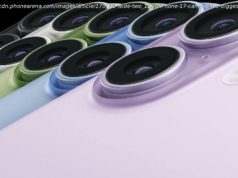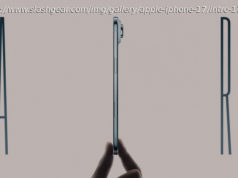From fan-favorite additions to some impressive camera-related functionality, here are the five key Samsung Galaxy Note 9 features worth knowing about.
The Samsung Galaxy Note 9 is finally official, delivering a comprehensive spec sheet and powerful internals. Then again, many flagship phones are powerful and have plenty of features, so what makes the latest Samsung device stand out from its rivals? We take a look at some of the key features and tweaks that make the Note 9 tick.
Samsung has played it safe since the Galaxy Note 7 disaster, sticking to a smaller battery size for the Galaxy Note 8 and Galaxy S9 (although the Active phones still have a large battery). After all, the Galaxy Note 7 fires were caused by batteries that were essentially too big for the phablet’s design.
Fortunately, Samsung has decided to increase the battery size with the Galaxy Note 9, offering a 4,000mAh battery. This is 17.5 percent larger than the Galaxy Note 8‘s 3,300mAh battery and 12.5 percent bigger than the Galaxy S9 Plus’s 3,500mAh cell.
Read: Samsung Galaxy S10 — All the rumors in one place
The company has also sought to assuage concerns about a repeat of the Galaxy Note 7, as Samsung’s DJ Koh claimed the battery was “safer than ever,” according to The Investor. The company can’t afford to make the same mistake twice, of course.
This battery size also brings Samsung’s phone up to par with the identically sized Huawei Mate 10 series. But the Chinese brand is expected to reveal an even larger battery in its upcoming Mate 20.
Huawei blazed a trail by introducing a series of AI-related features on its phones, beating the rest of the industry to the punch. The brand’s most prominent AI-related feature is its scene recognition function, which taps into machine learning to recognize over a dozen scenes/subjects/objects and adjust camera settings accordingly. LG has since applied the same tech to its ThinQ devices.
Samsung has followed Huawei’s lead here, adopting AI scene recognition for the Note 9. The company says the Galaxy Note 9 camera app is capable of recognizing 20 scenes, from sunset and animals to low-light and food. From here, it adjusts camera variables, such as saturation and white balance, to produce the desired results. Hopefully these results aren’t just a case of boosted colors and actually boost photo quality instead.
It’s not the only Huawei-inspired AI feature we see coming to Samsung phones either, as the Korean firm is also using AI-based algorithms for improved system performance, as seen on EMUI 5. It’s not the most spectacular use for AI but, the best case scenario is that your phone might still be speedy a year down the line.
Naturally, Samsung isn’t merely content with Huawei-derived AI features, delivering a unique feature of its own called Flaw Detection as well. After taking a snap, the phone will immediately tell you if the image is blurry, someone blinked, if there’s undesirable backlighting, or if the lens is dirty. It’s a neat idea, giving you the opportunity to take a better photo.
The company will need to achieve a fine balance with Flaw Detection. After all, what’s the point if it tells you all your photos are flawed (even the great ones), or if none of your snaps are flawed? But if it works well, it’ll be another feather in Sammy’s cap. No more going home after a social event only to discover that all your photos were trash.
We heard a lot about the new S Pen in the run-up to the phone’s release, and it’s indeed an even more unique selling point in the Note 9. The S Pen now uses Bluetooth LE connectivity and a solitary button to enable some neat features.
Whether you’re going through presentations, remotely activating the camera shutter key, or controlling music, the new S Pen delivers a variety of features. The button is programmable too, so you can choose what happens when you press, double-tap or hold down on the button in question.
The new S Pen also fully charges in under a minute via a super-capacitor (in lieu of a lithium-ion battery), which should be good for 200 button clicks. So think of the new S-Pen as more of a smart remote for your phone rather than the stylus of yore.
In a rather welcome move, Samsung has decided to ditch 64GB as the base Galaxy Note 9 model. Instead, 128GB of expandable storage is the entry-level model, which should be plenty for the vast majority of users. It’s a great decision on paper because few smartphone models start that high, instead opting for 64GB of internal storage.
The company is also offering a 512GB model, in case you need to download all your favorite Netflix shows and movies. Or if you plan to use the phone and Dex mode as a laptop replacement.
Neither the Samsung Galaxy S8 nor the Note 8 had the best position for a fingerprint scanner. In fact, we’d say it was a supremely poor position, placed right next to the camera housing. The scanner’s placement meant that accidentally smudging up the camera was a common complaint.
Fortunately, Samsung listened to consumers and placed the scanner below the camera housing. There’s also a distinct gap between the scanner and camera glass now, so if your finger does wander towards the cameras, you’ll know without having to visually check.
Samsung has also retained fan-favorite features like water resistance, wireless charging, and even the humble headphone jack. As standard as all these features were just a few years ago, Samsung’s decision comes as plenty of other manufacturers incorporate only one or two of them. Take a look at the Huawei P20 Pro, Sony Xperia XZ2, HTC U12 Plus, and the Google Pixel 2 for proof. In fact, aside from Samsung’s wares, LG’s G7 and the recent V-series are the only other flagships with all three features.
These aren’t the only much-requested features that have landed on the Galaxy Note 9, as microSD expansion is indeed available too. When combined with the aforementioned 512GB variant, it means that 1TB of storage is possible. Either way, you’ll have more storage than my work computer. NFC is also on board, as are Bluetooth 5 and stereo speakers, rounding out the list of fan-favorite features.






